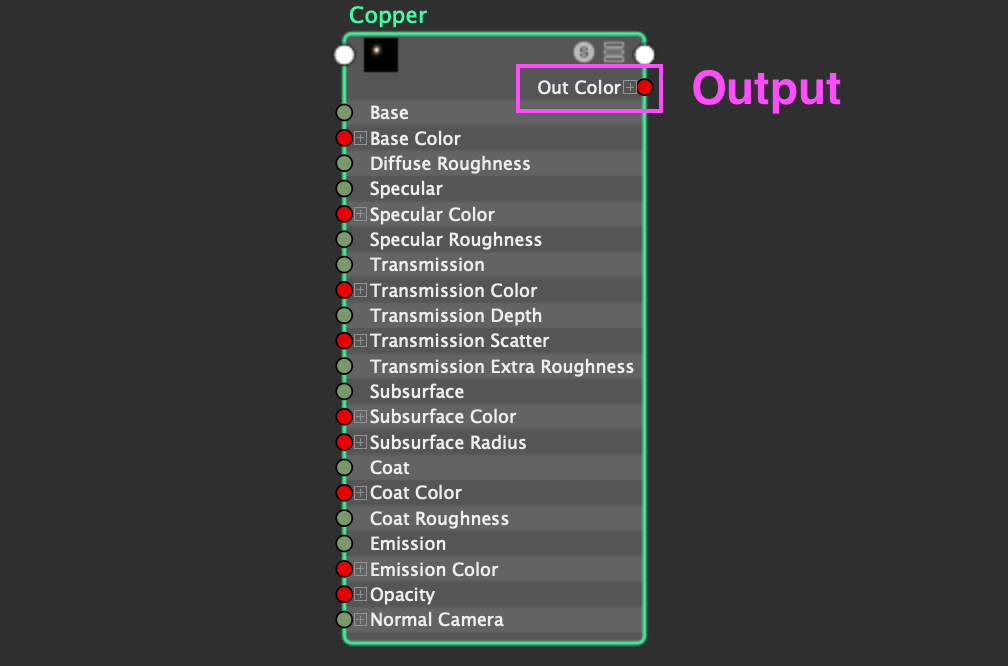The view and work with shaders, first open the HyperShade by clicking on the small HyperShade ball in the main menu:

This will open the HyperShade where you can see any shader associated with your scene.
For this example I have created a simple cube and applied the ‘Copper’ Arnold preset, and have applied a file texture as the colour:

Middle click the material and drag it down into the work area, creating a node:

Depending on how much screen real estate you have to play with, you may want to adjust your windows so you can comfortably see the shader node and all of its attributes:

Inputs and outputs
The connections on the left side of the node are the inputs and are the shaders attributes. You may recognise some of these from the Attribute Editor material attributes:

And the connection on the right is the output, or the result of the inputs:

The node above only represents the surface material, to see the entire shader network we can use the connections buttons which allow you to reveal to input, output and entire network connections:

- Reveal the upstream nodes
- Reveal both upstream and downstream nodes
- Reveal the downstream nodes
Let’s reveal the upstream:

Right at the start of this post I mentioned that I applied a file texture as the colour for the copper preset, you can see this represented in the upstream of our Copper node.
Now let’s reveal the entire network for our Copper node by clicking the reveal upstream and downstream nodes option:

Now we can see both the upstream and downstream for our copper node. At the far end of the downstream is the aiStandardSurface1SG node, this is a ‘shading group’ (notice that the node name is suffixed with ‘SG’). The shading group is responsible for connecting the Copper node into other areas of a scene.
